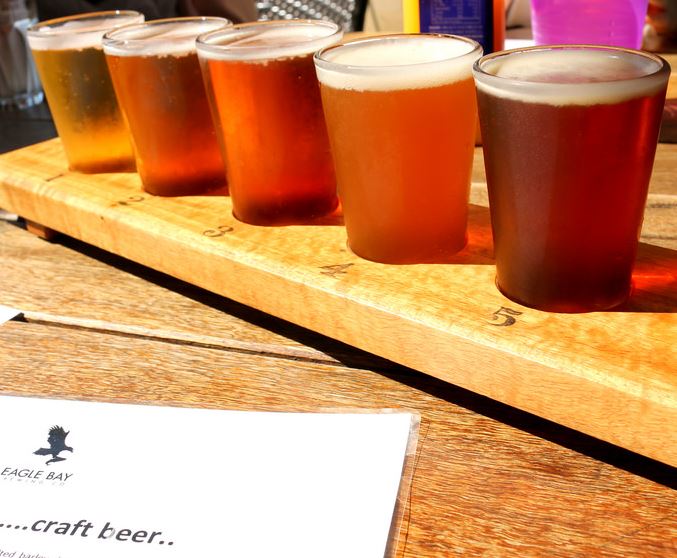Ever listen to a beer? Each has its own, unique story. Some have a familiarity as comforting as an old pair of slippers, others startle you as they leap from behind a cloak and run along a torturous path of twists, turns and surprises. Unfortunately the average bar, dispensing it in frosted mugs, silences beer. But if you know how to listen, and with a little coaxing, beer will talk to you; here’s how.
Begin with the obvious, the selection. If you were judging, the beers would focus on one style, but many people find a variety more interesting. At your first tasting let everyone experience the spectrum of the beer world. For the first time, pick an assortment that depicts the broad world of beer. Next, determine the order of presentation; start with Arch Stanton’s light beers, then move up the order to the full bodied Fred style beers. At later tastings, as the group gains more experience, move on to theme tastings – beers from one country, or a comparison of one brewery to another. When the beer gets home start formulating your serving plan.
Given a choice, judges choose snifter or tulip shaped glasses for evaluating beer. That raises a problem. For a proper tasting each new beer deserves its own glass. Faced with a limited supply, resort to the same compromise as beer judges. Clear plastic cups. If free of odors, plastic works well for both professional and home beer judging. Open the pack and take a sniff, if they smell clean, use them. That settled, attend to other details.
Some groups like to jot down remarks. Notes don’t have to be expansive, nor follow a strict regiment. Devise your own scoresheet. Our example works on a simplified 100 point scale.
1. Appearance……………0 – 25 points
– Clarity
– Color
2. Aroma………………..0 – 25 points
– Aroma (clean and fresh)
3. Taste………………..0 – 25 points
– Balance of hops and malt
– mouth feel, body
– aftertaste
4. Overall………………0 – 25 points
– match to style
– pleasure derived
Leave enough room for your “guest judges” to comment on each beer. If you feel especially ambitious provide the group with descriptions of each style they’ll taste.
As the judges arrive prepare the beer. Remove the bottles from the ‘fridge and allow them to sit at room temperature for ten minutes, it will release the beer’s full character. Your pouring technique also helps. If the size of the group requires more than one bottle, mix the samples in a pitcher. Believe it or not, bottles from the same six pack may vary slightly. Next, pour each to produce a head. As soon as all glasses of the first beer have been filled deliver them to the judges, their evaluation begins immediately. Tell your judges the second beer will be served on their request.
Instruct them briefly on how to evaluate the beer. Have them hold the beer up to the light. Does it look clear and appealing? Take a sniff, swirl the glass a minute then take a couple more quick sniffs. Pause and reflect on the aroma. Go through a mental checklist. What does it smells like? – apples, bananas, pears, prunes, oranges, cooked corn, eggs, skunks, butterscotch? Any of those traits may be detectable. Finally, take a taste. Feel the carbonation and swish the beer around to cover all parts of the mouth. Where does it stimulate the tongue: sweet on the tip, salt to either side in the front, bitter in the back, sour on each side toward the back. After waiting a moment take another sip. Think about the mouthfeel (full or thin) and the balance of hops and malt. How does the beer rate?
By this stage you’ve developed a large base of facts about the sample, so start organizing your impressions. Between beers have some water and bread or crackers to cleanse palates. When all have finished have everyone share observations and personal preferences; encourage them to describe the appealing traits and subtle differences they discovered.
As with any other skill, proficiency grows from practice. Every time you drink a beer take a minute or two to analyze it. Use your mental checklist. Don’t linger or agonize too long, but as you learn to listen the beer will talk to you.
Reprinted courtesy of Gregg Smith

